Above: The CBS news broadcast was sponsored by Philco, an early radio and television manufacturer. In the photos of the ABC newsroom below, you’ll notice they are also sponsored by a television manufacturer, Admiral.
The candidates are now at our mercy.
Election Day comes in two phases. The first is in the hands of the voter and those that tally their decisions. The second comes from the media, a frenetic and exciting evening (and early morning) of theorizing, prognostication and jump-the-gun prediction.
As we prepare to be assailed with CNN’s latest high-tech graphic presentations, appreciate these images of a less sophisticated but no less thrilling place — the newsrooms of CBS, NBC and ABC during the 1952 election, a contest between Adlai Stevenson and Dwight D Eisenhower. These photos were taken for Life Magazine by Al Fenn. The CBS Studio was at Grand Central Terminal, NBC at Rockefeller Center and ABC
By the way, Eisenhower was of course the winner, becoming the first Republican in the White House since 1928. The Republicans also won control of the House that year, the last year they would do so until 1994.
Below: NBC’s Monrobot, a “computer used to tabulate votes on election night,” made by the Monroe Calculating Machine Company.
Another voting tabulation device, an “Electric brain”, the UNIVAC Electronic Computer. This was, in fact, a ‘dummy set’ as the actual UNIVAC was quite a bit larger. The machine accurately predicted an Eisenhower victory, but CBS producers presumed it unreliable and did not initially report the results.
From the ABC newsroom:
Walter Winchell, enjoying a smoke as the votes roll in.
Photos courtesy LIFE Google images

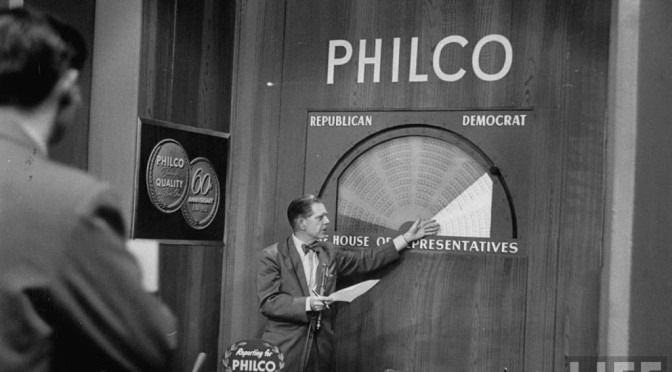
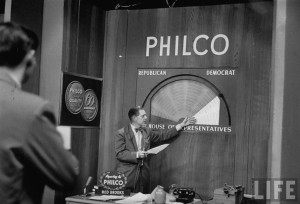

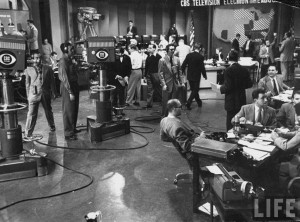
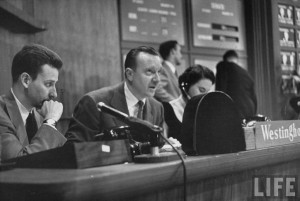
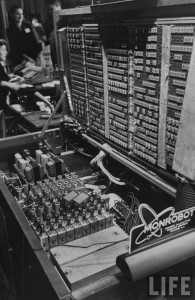
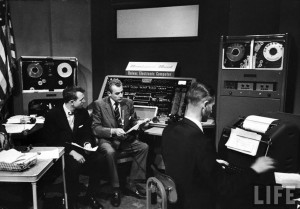

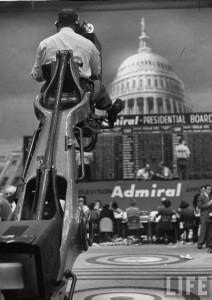
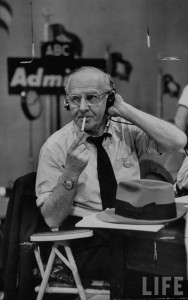
5 replies on “Election Night, live on TV! New York City newsrooms, 1952”
FYI the NBC (not CBS) broadcasts were sponsored by Philco. CBS’ were by Westinghouse. NBC itself was borne out of a partnership between General Electric and the Radio Corp. of America … appliance manufacturers, too.
Philco was sponsoring NBC News. Ned Brooks and John Cameron Swayze worked for NBC.
I thought that NBC-TV used one end of Studio 8-H with NBC Radio using the other end of 8-H for their Election Night coverage in 1952.
Starting in 1956, NBC’s television anchor desk was set-up on a balcony overlooking 8-H (which is where Chet Huntley and David Brinkley sat), correspondents handling regional results for TV seated at desks in front of giant tote boards along the walls of 8-H, and NBC News’ radio anchors and correspondents in the middle of 8-H where they could not be seen nor heard on TV.
A reminder that television started as a much more New York centric medium than radio. The story of early TV is not so much media history as local history!
[…] to be outdone, NBC had a smaller (but “sexier,” Chinoy notes) computer it called Mike Monrobot that year. In the press release, the gizmo was introduced as an amorous genius—it was the Mad Men […]